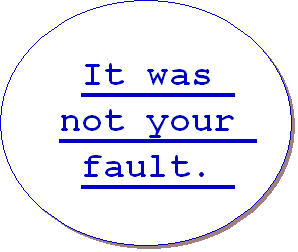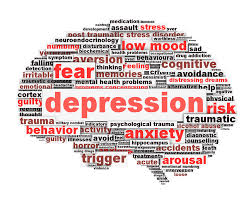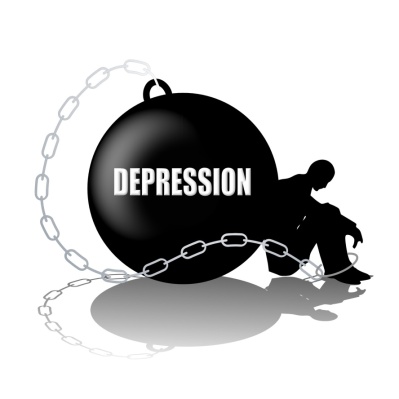 Suicide is hard to understand, especially when someone you love commits suicide. Discover the real reasons for suicide and how to help. It’s the sad truth that most don’t want to hear or see but it’s a reality that’s happening all around us, we cannot turn a blind eye any longer, so you first must understand and accept it for what it is and ask yourself, What is Suicide Really? Sure, according to a dictionary definition, suicide is when one voluntarily decides to take one’s life. But what is suicide? Outside of the dictionary, you want to know how suicide works. What progression does one follow when one commits suicide? Many years ago, a famous psychologist, Roy Baumeister, explained the progression toward suicide in the human mind. One does not simply decide to commit suicide; one is led to that decision by a series of prior events and decisions. See how Baumeister describes how suicide goes from ideas to action. This video takes a look at some of the young lives that was sadly taken away for reasons that could have been prevented.
Suicide is hard to understand, especially when someone you love commits suicide. Discover the real reasons for suicide and how to help. It’s the sad truth that most don’t want to hear or see but it’s a reality that’s happening all around us, we cannot turn a blind eye any longer, so you first must understand and accept it for what it is and ask yourself, What is Suicide Really? Sure, according to a dictionary definition, suicide is when one voluntarily decides to take one’s life. But what is suicide? Outside of the dictionary, you want to know how suicide works. What progression does one follow when one commits suicide? Many years ago, a famous psychologist, Roy Baumeister, explained the progression toward suicide in the human mind. One does not simply decide to commit suicide; one is led to that decision by a series of prior events and decisions. See how Baumeister describes how suicide goes from ideas to action. This video takes a look at some of the young lives that was sadly taken away for reasons that could have been prevented.
1) Severe disappointment. What is suicide at its root? First, you experience severe disappointment.  You set your standards, and your circumstances fall far below those expectations. Maybe it’s that your expectations were too high; maybe it’s that you’re just going through a lot of setbacks in your life. Regardless, you’re in the midst of severe disappointment. If you’re not careful, that disappointment can begin to fuel suicidal thoughts. Even before it is actually committing suicide, suicide is dangerous.
You set your standards, and your circumstances fall far below those expectations. Maybe it’s that your expectations were too high; maybe it’s that you’re just going through a lot of setbacks in your life. Regardless, you’re in the midst of severe disappointment. If you’re not careful, that disappointment can begin to fuel suicidal thoughts. Even before it is actually committing suicide, suicide is dangerous. 2) Self-blame. Second, you blame
2) Self-blame. Second, you blame  yourself for all of the disappointment in your life. As a result of your miserable circumstances, you begin to “demonize” yourself, heaping the blame on your own shoulders. Part of this demonization means developing a deep hate for yourself, characterized by low self-esteem and self-worth. Self-blame is a big part of why suicide ruins a person.
yourself for all of the disappointment in your life. As a result of your miserable circumstances, you begin to “demonize” yourself, heaping the blame on your own shoulders. Part of this demonization means developing a deep hate for yourself, characterized by low self-esteem and self-worth. Self-blame is a big part of why suicide ruins a person. 3) Self-absorption. Third, you become entirely
3) Self-absorption. Third, you become entirely  obsessed with your own inability to measure up to the standards that you have set up. You turn inward, shutting out those around you. When you face the pressure to commit suicide, your battle is not against the people in your life who have hurt you; it is against your perceptions of yourself.
obsessed with your own inability to measure up to the standards that you have set up. You turn inward, shutting out those around you. When you face the pressure to commit suicide, your battle is not against the people in your life who have hurt you; it is against your perceptions of yourself. 4) Depression and anxiety. Here, you experience
4) Depression and anxiety. Here, you experience  what Baumeister calls “negative affect,” meaning that you experience negative emotions related to your disappointment. Severe depression or a sense of anxiety sets in. We use others’ standards to compare ourselves, and we experience deep anxiety when we fail to meet those expectations. This anxiety, too, can translate into suicidal thoughts.
what Baumeister calls “negative affect,” meaning that you experience negative emotions related to your disappointment. Severe depression or a sense of anxiety sets in. We use others’ standards to compare ourselves, and we experience deep anxiety when we fail to meet those expectations. This anxiety, too, can translate into suicidal thoughts. 5) Cognitive deconstruction.
5) Cognitive deconstruction.
 In this phase, your brain breaks down your life into easy-to-understand thoughts. This step of suicide involves an “escape from meaningful thought,” Baumeister argues. This is why suicide is so dangerous to contemplate—thinking about the big questions only reminds you of your depression, and so you enter a sort of “emotional deadness” instead. This deadness is a big part of how suicide progresses. Busywork often takes over as you work to avoid the pressing conflict within yourself. You busy yourself to quiet your thoughts about suicide.
In this phase, your brain breaks down your life into easy-to-understand thoughts. This step of suicide involves an “escape from meaningful thought,” Baumeister argues. This is why suicide is so dangerous to contemplate—thinking about the big questions only reminds you of your depression, and so you enter a sort of “emotional deadness” instead. This deadness is a big part of how suicide progresses. Busywork often takes over as you work to avoid the pressing conflict within yourself. You busy yourself to quiet your thoughts about suicide. 6) Disinhibition. What is suicide at this stage?
6) Disinhibition. What is suicide at this stage?  Finally, now that your brain has turned off “deep” thoughts about how your death would affect those you love or how suicide may be “wrong,” your brain has finally accepted that to commit suicide may be your best escape from depression. In this step, you leap over the last psychological hurdles that stand between you and suicide.
Finally, now that your brain has turned off “deep” thoughts about how your death would affect those you love or how suicide may be “wrong,” your brain has finally accepted that to commit suicide may be your best escape from depression. In this step, you leap over the last psychological hurdles that stand between you and suicide.
Where Can You Turn for Hope? If you read through these steps and realize that you’re really in need  of help and someone to talk to, check out the link here. Now. There is reason for hope– your life is worth much more than you know. And there are people who want to help you get to a better place. Suicide is a permanent solution to a temporary problem. You’ve probably heard that before, but it bears repeating. Yes, it can take a little work to rediscover purpose and meaning in our lives. But the prize is worth the work. Keep fighting, friend. Know that you’re not alone.
of help and someone to talk to, check out the link here. Now. There is reason for hope– your life is worth much more than you know. And there are people who want to help you get to a better place. Suicide is a permanent solution to a temporary problem. You’ve probably heard that before, but it bears repeating. Yes, it can take a little work to rediscover purpose and meaning in our lives. But the prize is worth the work. Keep fighting, friend. Know that you’re not alone.
Related Articles:
– Being Kind
– Meet The Archies
– Gay Ottawa teen who killed himself was bullied
– It Gets Better – In Memory of Jamie Hubley
– “DEATH” via Suicidal Bullying
– What Happened?


 EYE CATCHERS is B.P’s new online Webstore, our Affiliates include: Virgin Mobile USA, Hotels.com, CyberLink, TrustedID, Roxio, Expedia, Kaspersky Anti-Virus, 101 inks.com and End of Retail just to name a few. Remember proceeds to non-profit Anti-Bullying Organizations so stop by and like our webstore or explore and shop a little, also sorry but you can now click these images and be directly connected, have a great weekend and stay safe. Don’t forget to share and tell your friends because the end of Bullying starts with you…cheers.
EYE CATCHERS is B.P’s new online Webstore, our Affiliates include: Virgin Mobile USA, Hotels.com, CyberLink, TrustedID, Roxio, Expedia, Kaspersky Anti-Virus, 101 inks.com and End of Retail just to name a few. Remember proceeds to non-profit Anti-Bullying Organizations so stop by and like our webstore or explore and shop a little, also sorry but you can now click these images and be directly connected, have a great weekend and stay safe. Don’t forget to share and tell your friends because the end of Bullying starts with you…cheers. 

I used to work on a college campus and spent many, many hours educating students about cyber-bullying and suicide. When I showed them pictures, names and dates of almost 100 young people who have completed suicide, they paid attention. Thank you for your work. Suicide & bullying need to be talked about, rather than kept in the shadows. Blessings…
LikeLike
This is an amazing post! I plan to tweet it and share it. This article is very helpful and the videos are heart-wrenching and send out a clear message. Thank you!
LikeLike
Your welcome and thank you very much for your help in spreading the word and giving hope to those of us who have been victims of this cruelty.
LikeLike
Tough to read – but a must read for anyone who has lost a loved one to suicide. Thank you for writing it and sharing.
LikeLike
Your welcome we need to spread hope for all.
LikeLike
Just too terrible. NOTHING EVERY HAPPENS TO THE BULIES SO WHY SHOULD THEY EVER STOP? There have to be consequences for what they do and until there are some NOTHING IS GOING TO CHANGE. Seriously it is a crime WITHOUT punishment. They will not stop until they have to pay for what they do.
LikeLike